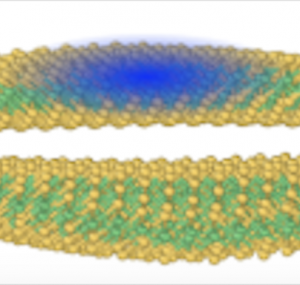I. Maity, A. A. Mostofi and J. Lischner, Electrons surf phason waves in moiré bilayers,
Nano Letters 23, 4870 (2023).
Phasons are a particular type of collective motion of atoms that occur in aperiodic structures such as quasicrystals. The interaction between phasons and other collective excitations within a material leads to fascinating thermal and electronic transport phenomena.
Recently, twisted moiré materials, in which two or more two-dimensional (2D) materials are stacked and rotated relative to one another, have also been predicted to host phasons. Moiré systems have emerged as a new platform to discover, understand and manipulate novel quantum phases of matter, including superconducting and correlated insulating states. As a result, moiré materials provide a promising material platform to study the interaction of phasons and electrons.
In this work, we discover a fascinating consequence of this interplay. Focussing on a MoSe2/WSe2 heterobilayer, we have shown that thermally excited phason modes give rise to an almost rigid motion of the moiré pattern. Low-energy states associated with electrons and holes are localized in specific regions of the moiré material and follow the thermal motion of these regions, and therefore appear to “surf” the phason waves.
Our findings provide new insights into the interplay of electrons and phasons and have implications for the design of efficient charge and exciton transport devices based on moiré materials.
This work was done in collaboration with Dr Indrajit Maity and Prof Johannes Lischner at Imperial College London.
